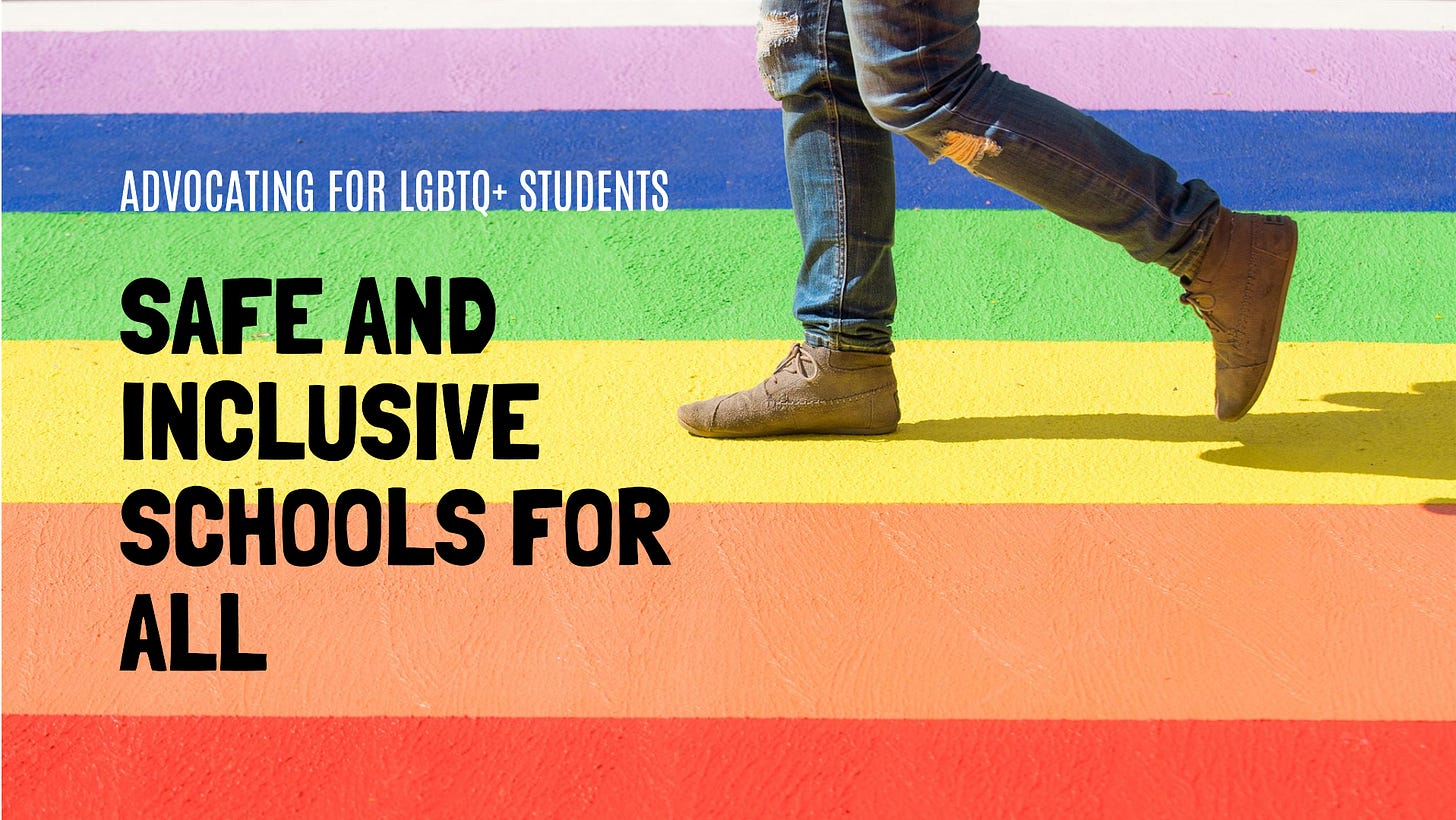Safe Schools for All: LGBTQ+ Inclusive Education Policies
Advocating for educational policies that ensure safety and inclusion for LGBTQ+ students within the school environment.
Educational institutions should be sanctuaries of learning, growth, and safety for all students, regardless of their sexual orientation or gender identity. Yet, LGBTQ+ students often face unique challenges and discrimination that hinder their educational experience and overall well-being. Therefore, advocating for and implementing LGBTQ+ inclusive education policies is essential for creating safe and supportive schools for everyone.
The Importance of LGBTQ+ Inclusive Education
LGBTQ+ inclusive education policies are vital for several reasons. First, they help reduce the prevalence of bullying and harassment that LGBTQ+ students often face. According to a 2019 report by GLSEN, nearly 60% of LGBTQ+ students felt unsafe at school because of their sexual orientation, and 43% because of their gender expression. This unsafe environment can lead to decreased academic performance, higher absenteeism, and adverse mental health outcomes.
Moreover, inclusive policies promote a sense of belonging and acceptance among LGBTQ+ students. When schools adopt inclusive curricula that reflect diverse sexual orientations and gender identities, students see themselves represented in what they learn. This representation fosters self-esteem and validation, which are crucial for healthy psychological development.
Key Components of Inclusive Education Policies
Anti-Bullying Measures: Schools must implement comprehensive anti-bullying policies that explicitly protect LGBTQ+ students. These policies should include clear definitions of bullying and harassment, procedures for reporting incidents, and consequences for perpetrators. Training for staff on how to handle such incidents sensitively and effectively is also crucial.
Inclusive Curriculum: Integrating LGBTQ+ topics into the curriculum helps normalize diverse identities and reduces stigma. This can include teaching about significant LGBTQ+ historical figures, discussing diverse family structures, and addressing gender identity and sexual orientation in sex education.
Support Systems: Schools should provide support systems such as counseling services, LGBTQ+ student clubs, and safe spaces where students can find community and assistance. Having designated staff members trained in LGBTQ+ issues can offer additional support and advocacy for students.
Policy and Practice Alignment: It is essential for school policies to align with practices that support LGBTQ+ inclusion. This includes allowing students to use preferred names and pronouns, providing gender-neutral bathrooms, and ensuring dress codes do not discriminate based on gender identity.
Parental and Community Involvement: Engaging parents and the community in discussions about LGBTQ+ inclusion can help foster a supportive environment beyond the school. Educational workshops and open forums can address concerns, dispel myths, and promote understanding.
Overcoming Challenges
Implementing LGBTQ+ inclusive education policies is not without challenges. Resistance from parts of the community, political pushback, and a lack of resources can hinder progress. However, these challenges can be addressed through persistent advocacy, education, and coalition-building. It is crucial to present data and personal stories that highlight the positive impacts of inclusive policies on student well-being and academic success.
The Role of Educators and Administrators
Educators and administrators play a pivotal role in fostering inclusive school environments. They must be proactive in educating themselves about LGBTQ+ issues, challenging discriminatory behaviors, and advocating for inclusive policies. Professional development and continuous training are essential to equip them with the knowledge and skills needed to support LGBTQ+ students effectively.
Conclusion
Ensuring safe schools for all through LGBTQ+ inclusive education policies is not just a matter of equality; it is about creating a nurturing and supportive environment where every student can thrive. By implementing comprehensive policies, fostering inclusive curricula, and providing robust support systems, we can build educational institutions that honor and celebrate diversity. This commitment to inclusivity will not only benefit LGBTQ+ students but will also enrich the educational experience for all.
Sources
GLSEN. (2019). The 2019 National School Climate Survey: The Experiences of Lesbian, Gay, Bisexual, Transgender, and Queer Youth in Our Nation’s Schools.
Kosciw, J. G., Greytak, E. A., Zongrone, A. D., Clark, C. M., & Truong, N. L. (2018). The 2017 National School Climate Survey: The Experiences of Lesbian, Gay, Bisexual, Transgender, and Queer Youth in Our Nation's Schools. GLSEN.
Russell, S. T., Kosciw, J., Horn, S., & Saewyc, E. (2010). Safe Schools Policy for LGBTQ Students. Social Policy Report, 24(4), 1-17.
Meyer, E. J., Taylor, C., & Peter, T. (2015). Perspectives on Gender and Sexual Diversity in Schools. University of British Columbia Press.
Snapp, S. D., Hoenig, J. M., Fields, A., & Russell, S. T. (2015). Messy, Butch, and Queer: LGBTQ Youth and the School-to-Prison Pipeline. Journal of Adolescent Research, 30(1), 57-82.
The Trevor Project. (2020). National Survey on LGBTQ Youth Mental Health 2020.
Human Rights Campaign. (2018). 2018 LGBTQ Youth Report.




